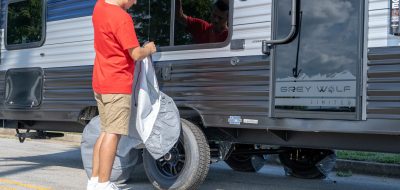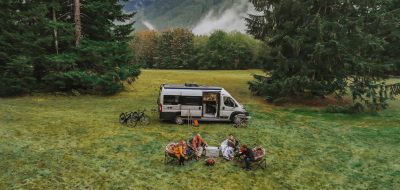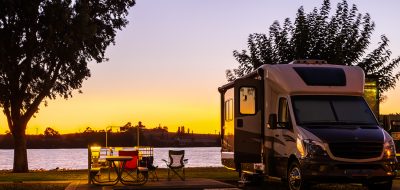Ah, it is that time of the year, crisp fall days with the smell of fallen leaves so thick and rich you could almost eat it. The first Frost has come and gone; the Holidays are staring you in the face. But the cold and snow are still in the future. A wonderful time of year when nature is winding down from one year and sowing the seeds of the next. For many of us, it is the time to try to squeeze one more camping trip out and maybe do something different outdoors. For us, that means going up into the hills of Pennsylvania’s Elk country and watching the elk as they start the fall mating ritual.
Now, what does this mean to you? Well, the fall of the year is when most large animals have their mating season. Their usual caution is sometimes lacking, to the point that the males will chase females into towns or across roadways and highways. And, until the females are ready to mate, they will run from the males in any direction and at any speed they need to avoid them. Bears are looking for the last bit of food and moving toward their dens. And let us not forget this is the time of the year that Big game is harvested. The game commissions have noted that the young are able to live on their own and are independent, and they have decided that this is the best time to harvest big game (and most small game also). So the hunters are moving the game animals around also. Are you now getting my point? This is the time of the year when very large animals are moving about quite freely and, in some cases, running nilly willy around on the roadways!
And, let it be understood that even large vehicles (including Class A’s) are still in danger. Just a few weeks ago here in Pennsylvania a Semi-Truck driver struck an Elk with his semi and, while the elk died, the truck was totaled and the driver was so badly injured that he required air medical transport to a trauma center for treatment. Even more at risk are the normal sized Tow vehicles and Toads! And don’t think that just because you don’t have elk in the area you are safe. Deer and/or black bear are in every state in the union I believe, except for Hawaii.
The reason that these animals are so dangerous to you and your vehicle is that Force = Mass x Acceleration and, most of the time, you supply the acceleration and they supply the mass. This is not a linear increase either. In other words, twice the speed does not mean twice the force, the force is a factor of Kinetic energy (Ek) is calculated as Ek = 1/2 Mass x Velocity Squared. To say it somewhat more simply, the faster you go the damage to you and your vehicle (and to the animal) increases at an amazing rate.
So, what can you do to avoid becoming part of the yearly statistics of animal versus vehicle accidents? Well, first off, just being aware of the fact that this is the time of the year when this happens and being more alert will help you decrease your chances of being involved. The second, of course, is to Decrease your speed when you are in an area where you believe you might strike a animal. Think about it, the roads in Yellowstone have a maximum speed limit of 45 mph or less; where else in the world do you have a greater chance of suddenly finding an animal on the roadway? Also, remember that most of these animals are more active within an hour or two of sunrise or sunset, so plan accordingly. Also, be aware that the smaller your vehicle and the larger the animal the more danger you are in from the animal coming into the passenger compartment, and they have lots of sharp hooves and strong legs! Finally, some tips from someone that lives in a state that has some of the highest rates of animal strikes. If you see one animal, there are probably at least 2 or 3 more nearby, so don’t focus on just one. If you see one of these animals, try changing your lights from high beam to low or low to high. If you see eyes in your headlights, SLOW down or STOP if they are directly in front of your lights! Don’t assume that the animal will remain standing by the roadway because they often decide at the last instant to dart across the roadway in front of you. The "Deer alert" whistles that mount on the bumper of your vehicle do seem to work, at least somewhat, but very easily become clogged with insects and road debris, so don’t trust too much in them. Finally, do not swerve to miss the animal (Large or Small) if it could cause you to possibly lose control and strike something else. Even an ELK weighs less than a large oak tree, and, in this case, it is better to hit the animal rather than a tree or another car (also your insurance covers you striking an animal, but you are at fault if you strike a tree or another vehicle!).
So, while you can’t drive in fear of these animals, a heightened awareness of the time of year and the area you are in can lead to a safer trip for you and your family. And, if you are lucky enough to see some of these beautiful animals, maybe slowing down or stopping on the road side to view them could make your families trip!
Your Obedient Servant,
Gary Smith, Jr.
Just to underscore the reality of this, this past weekend a young lady very near where I live (it happened in Venango County PA) struck a deer which came into the passenger compartment causing many injuries that were eventually fatal. My best wishes and sympathy to her family and friends.








Va. Patroit
The hunters aren’t doing their job!